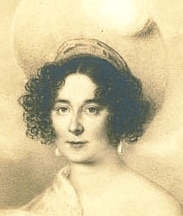Who is “Für Elise” Really About?
April 14, 2023
The piano piece Bagatelle No. 25 in A minor composed by Ludwig van Beethoven is more famously nicknamed Für Elise (German for ‘for Elise’), with its first movement, or first part being one of the most famous melodies. The E, D sharp, E, D sharp, E introduction is recognized even by those who are not listeners of classical music, garnering the piece and its mysterious dedicatee much attention. Who is Elise? Who was she to Beethoven? Pianists who recall the piece as one of the first they learned find themselves curious, as do those who see Für Elise pop up on various Spotify studying playlists.
Beethoven was a German composer and pianist who lived from 1770-1827, and is one of the most admired figures in classical music. His pieces rank among the most performed of the classical repertoire and even as he grew deaf towards the end of his career, he still composed many works whose melodies are recognizable today. Being the predominant musical figure in the transition between the Classical and Romantic eras, his music embodied a spirit of humanism and expression. This is what attracted and continues to attract Beethoven’s listeners today, with many being drawn to the emotional illustrations that his music portrays. Beethoven’s career of composition is often divided into early, middle, and late periods. His Bagatelle No. 25, or Für Elise, was composed in what many reference as his ‘middle period’ (1802-1812) which was characterized by his individual development, his being influenced by composers Haydn and Mozart, and a style that is considered heroic. His hearing was fleeting at this time, but he was still able to hear some sounds and voices, mostly those of higher pitch. This is why Für Elise is written using the higher notes on the piano, with the highest note in the composition being an E7. The piece was not published during his lifetime, and was only discovered 40 years after Beethoven’s death.
Due to the song’s nickname-sake being based on a note that Beethoven left in the manuscript of the Bagatelle No. 25 (that was initially presumed to read ‘für Elise’), many are curious about the piece’s muse. Who is the Elise that Beethoven wrote this for? This is ultimately a mystery because Beethoven never married, and a piece as sweet and lighthearted as this being dedicated to some unknown maiden could only be considered romantic.
When a copywriter named Ludwig Nohl discovered the original manuscript of Bagatelle No. 25 in Beethoven’s own handwriting in a woman named Therese Malfatti’s papers, he transcribed it and published a version of it in 1867. Beethoven is notorious for his messy and hard-to-read handwriting, so Nohl, unfortunately, misread the dedication. He transcribed it to say “für Elise” when in reality, Beethoven had actually written “für Therese,” presumably referencing Malfatti. Despite this discovery clearing up some confusion about who Beethoven may have dedicated this piece to, three women are thought to possibly be the muse for what we know as Für Elise: Therese Malfatti, Elisabeth Röckel, and Elise Barensfeld.
The most widely accepted theory is that Bagatelle No. 25 was written for Therese Malfatti, due to the piece being found among her own papers, Beethoven’s messily scribbled dedication note in the manuscript of the piece, and his known romantic affiliations with her. Malfatti was a wealthy Austrian musician and merchant who Beethoven met through his friend Ignaz von Gleichenstein. Beethoven gave Malfatti piano lessons and spent the year of 1810 courting her with the intent to propose. He even wrote a letter to her in the springtime of that year that read, “…I wish you all the good and beautiful things of this life. Bear me in memory — no one can wish you a brighter, happier life that I — even should it be that you care not at all for your devoted servant and friend, Beethoven.” Due to Beethoven’s fondness for Malfatti in addition to the other evidence, it is the most commonly held assumption that Für Elise was actually written for her.
Another theory is that Beethoven dedicated Bagatelle No. 25 to a German soprano opera singer named Elisabeth Röckel. This was the most widely accepted dedicatee before it was found that Ludwig Nohl had messed up the transcription of Beethoven’s manuscript, and read it to say “für Elise”. Though, despite the name confusion, Röckel is a plausible candidate for the muse of this piece. Beethoven met Röckel through her brother, Joseph August, and they became good friends. It’s apparent that at some point in Beethoven’s and Röckel’s friendship, he thought about proposing to her, but when she took a job far away from where Beethoven lived, their relationship hindered. It is notable that while on his deathbed, Beethoven sent for Röckel in hopes that she would visit him. She visited him twice during the week of his death, and Beethoven gave her a lock of his hair and the last quill he used, which Röckel kept as treasured possessions until she too passed. Elisabeth Röckel was known to Beethoven and their circle of friends as Elise, meaning that if Nohl’s transcription of Bagatelle No. 25’s manuscript was correct, the piece would likely have been about her.
A third possible Elise would be Elise Barensfeld, a German soprano whom Beethoven was known to be friends with, but there is little evidence pointing to her as his muse. There isn’t any evidence of them being romantically involved or even especially close, so when musicologist Rita Steblin claimed Beethoven dedicated Für Elise to Barensfeld, it was met with little agreement. Aside from her first name, Elise (which was proven to not be what Beethoven had written in the first place), there is virtually nothing linking her to the song.
It’s come to the point where historians and fans alike have had to realize that the possibilities of who the muse of Für Elise is are endless, due in part to Beethoven’s many love interests, and the puzzle pieces of nearly everything having to do with the piece itself. There is still much to uncover about Beethoven’s life, and perhaps along with that will come a definitive answer as to who Bagatelle No. 25 was written for.








